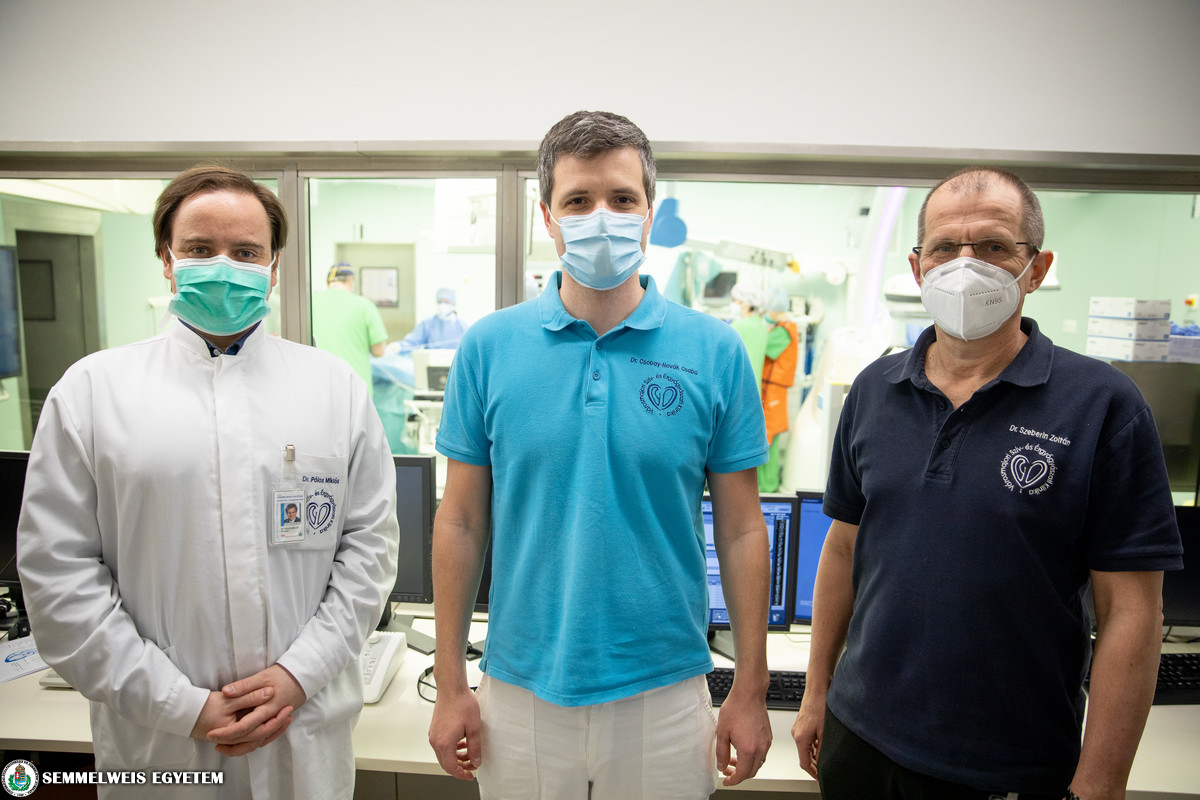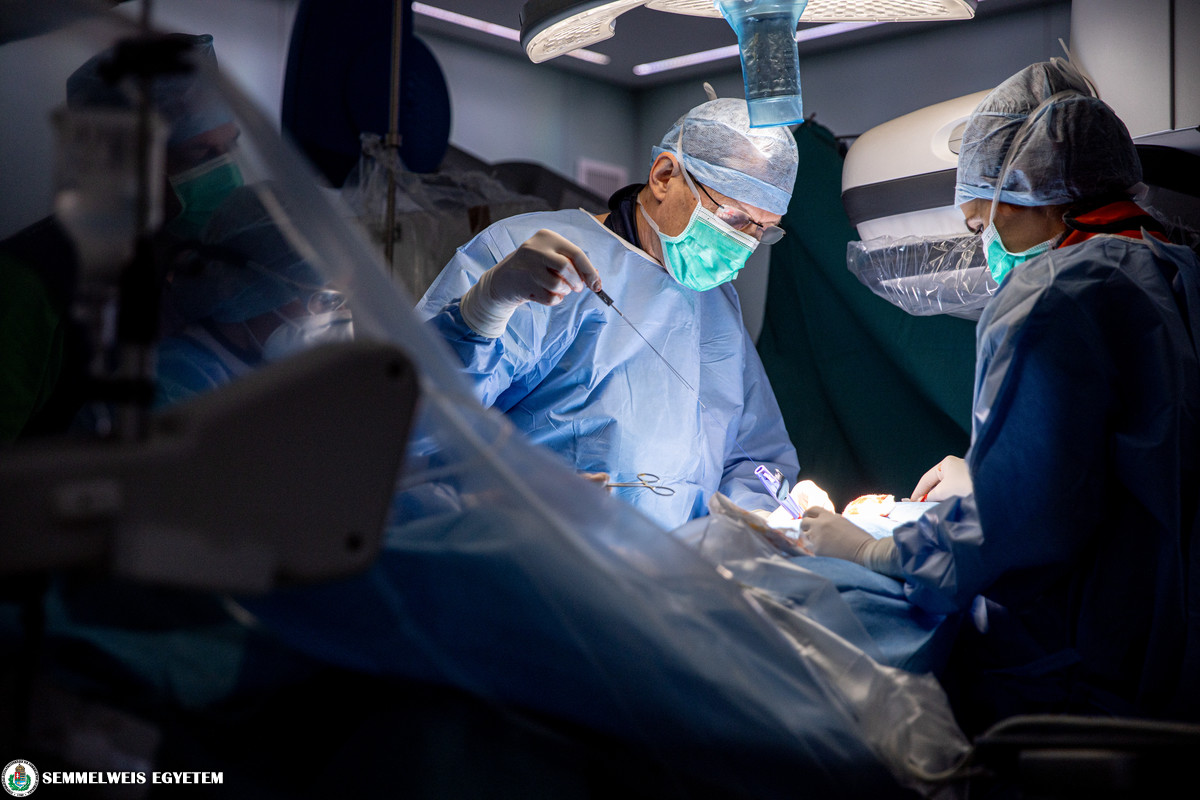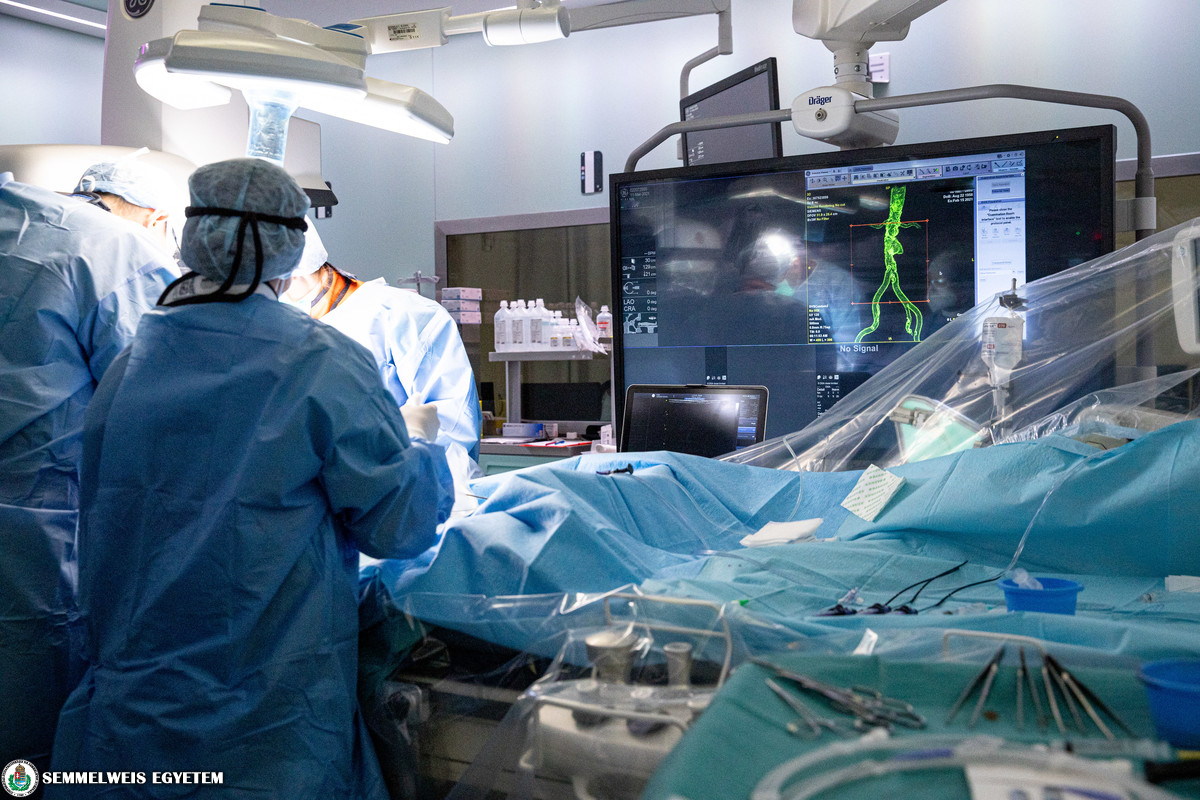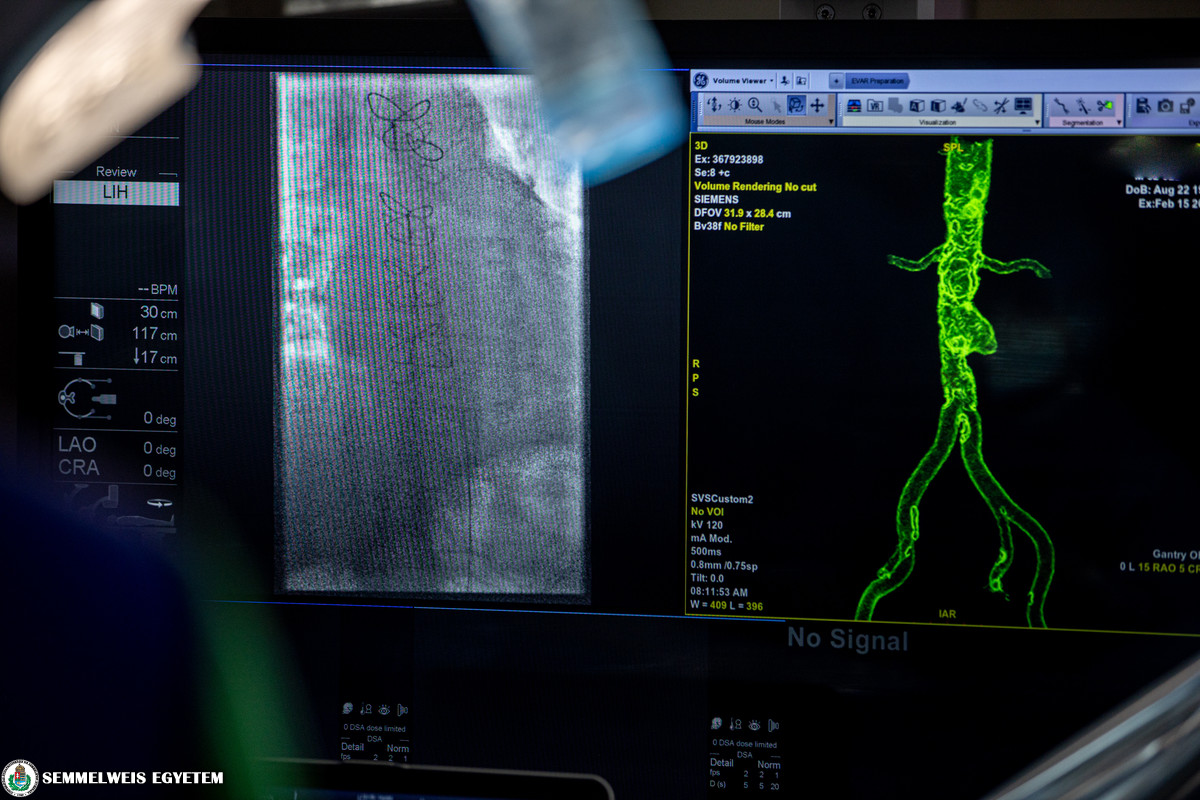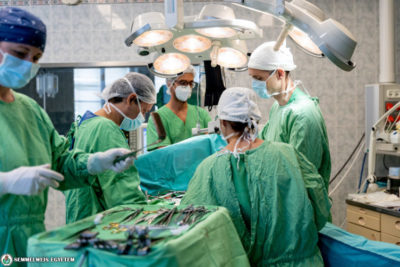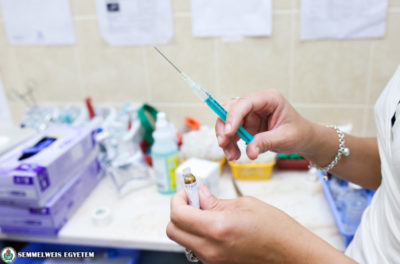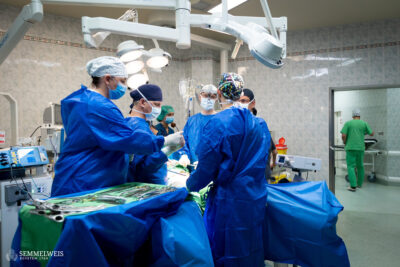Patients with aortic conditions fall under the treatment of three fields of medicine at Semmelweis University’s Heart and Vascular Center: vascular surgery, cardiac surgery and radiology. The incidence of aortic disease in the male population over 65 is only 3%, which makes it a relatively rare disease, however, it has severe consequences. The Semmelweis Aortic Center, which was established just a year ago, aims to select the most appropriate therapy for the patient in collaboration with the involved fileds of medicine, and to perform extremely complicated surgeries by the most experienced professionals.
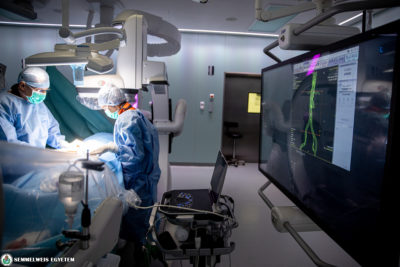 The aorta travels through the human body, from the heart to the navel, and many smaller, important vessels branch off towards the brain, limbs, kidneys, intestines, and spinal cord. The treatment of aortic diseases requires special care, as it provides the main vessel for vital branches in the chest and abdomen. The most common aortic diseases are aneurysm and dissection, which is the rupture of one of the three aortic wall layers, but vasoconstriction and arterial blockage can also occur. Based on international data, these diseases may affect 1,000 patients in Hungary every year, the average age of patients is 67 years. The most common causes of dilation are atherosclerosis, smoking, unhealthy lifestyle, untreated cardiovascular conditions or high blood pressure. In tenth of the cases, there is a genetic cause in the background. Due to the weakened connective tissue, patients with Marfan syndrome are the most affected, when regular control and screening of the family members are very important for prevention.
The aorta travels through the human body, from the heart to the navel, and many smaller, important vessels branch off towards the brain, limbs, kidneys, intestines, and spinal cord. The treatment of aortic diseases requires special care, as it provides the main vessel for vital branches in the chest and abdomen. The most common aortic diseases are aneurysm and dissection, which is the rupture of one of the three aortic wall layers, but vasoconstriction and arterial blockage can also occur. Based on international data, these diseases may affect 1,000 patients in Hungary every year, the average age of patients is 67 years. The most common causes of dilation are atherosclerosis, smoking, unhealthy lifestyle, untreated cardiovascular conditions or high blood pressure. In tenth of the cases, there is a genetic cause in the background. Due to the weakened connective tissue, patients with Marfan syndrome are the most affected, when regular control and screening of the family members are very important for prevention.
“Aortic aneurysm, which is the most common lesion of the main artery, develops unnoticed over decades, as it is mostly an asymptomatic disease. It is usually discovered accidentally during a chest x-ray, abdominal ultrasound, or CT scan. However, if the dilation reaches the point when the vessel ruptures unexpectedly, it causes death in 50% of the cases”, said Dr. Zoltán Szeberin, Associate Professor of the Heart and Vascular Centre, Deputy Head of the Department of Vascular and Endovascular Surgery, Co-Chair of the Semmelweis Aortic Center.
As he pointed out, both Hungarian and international data show that in such cases, the patient’s chances of survival are significantly increased if they are treated in a busy clinic where many of these special surgeries are performed. The team at the Semmelweis Aortic Center, which is the first multidisciplinary working group on aortic diseases in Hungary is made up of a vascular surgeon, cardiac surgeon, radiologist and a specialized anesthesiologist, who decide together on the type of surgery that is most suitable for the patient. For example, it is not always clear whether open surgery is absolutely necessary or whether a particular aortic lesion can be resolved by catheter intervention, which involves less exertion and faster recovery. Depending on the affected area, the procedure is performed jointly by a vascular surgeon, radiologist, cardiac surgeon, or, if necessary, a representative of all the three fields.
These interventions are performed at the center in the country’s first hybrid operating room. According to the National Vascular Registry, one-third of all domestic aneurysm surgeries have been performed here in the past 3 years. The aortic center is jointly headed by Dr. Zoltán Szeberin; Dr. Csaba Csobay-Novák, interventional radiologist, assistant professor at the Heart and Vascular Center and Dr. Miklós Pólos, heart surgeon, assistant professor.
Pálma Dobozi
Photo: Attila Kovács – Semmelweis University
Translation: Katalin Illés-Romhányi
